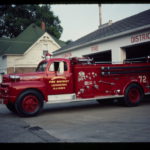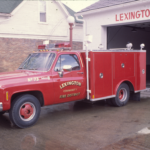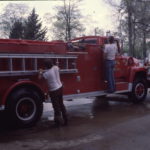Tradition
History | Previous Stations | Previous Apparatus
The Early Lexington Fire Department
Taken from Stories of the Past and Poetry by Morris Jones
Lexington did not have city water before 1900. Most citizens had their private wells, but the business places and the people living on Main Street were supplied by two city wells, which were in the center of Main Street. One was in front of the Mahan Building (lately the location of Crossroad Medical) and the other was in front of where the grocery store is now located. The wells were equipped with hand pumps and there were troughs for watering horses. The wells were a busy place, as people were lined up getting their water for the day and exchanging greetings and gossip. When there was a fire, a hand pump was used that resembled a railway handcar. It took four men to work the pump and the hose was dropped into a well or a cistern at a home. They also often used the bucket brigade as no city water was available until 1900.
Volunteers helped fight fires by the “bucket brigade” method before fire hydrants, city water, and modern equipment were available.
The stand pipe (water tower) was built in 1900 and fire hydrants were installed. The hose reel shown in the picture below was also purchased in 1900. This type of hose cart was still in use in 1918. It had a tongue but was pulled mostly by hand as it would take too long to go to the livery stable and get a team of horses. There was no need for a siren as every one had plenty of time to get out of the way.
Grant Preble was the fire chief. In the roaring twenties Raymond Crawford was appointed fire chief and I joined the fire fighting volunteers. The fire chief was paid five dollars per fire and the volunteers received two dollars per fire and we furnished our own raincoats and helmets. Mr. Crawford improved the department by purchasing a used model T Ford truck.
There were not many fire hydrants on the outskirts of town but the truck had a power pump and we could drop the pump hose in a fire well or cistern. Many people had cess pools and at night it was hard to tell the difference between a fire well and a cess pool. When this error was made, it usually took two firemen to hold the lady of the house to keep her from beating up the fire chief.
Lexington did not get paved streets until 1925 so in the spring and fall there were ruts down to the culverts and when the fire truck hit a culvert, there was a big bump. One night I was sitting on a pile of fire hose in the back of the truck when it hit a culvert and the hose and I went 10 feet in the air! The hose came down in the truck, but when I landed, the truck and hose were long gone and I lit in the mud. We put out many fires with that old truck, but sometimes all we managed to save was the basement.
Later the name changed from Lexington Fire Department to Lexington Community Fire Protection District and a fleet of new trucks was purchased. It began giving protection to the rural district as well as the city of Lexington
Do you have more Historical Information about the Lexington Fire Department?
A past volunteer? Or have a personal story you can share?
Please contact us.
Previous Stations
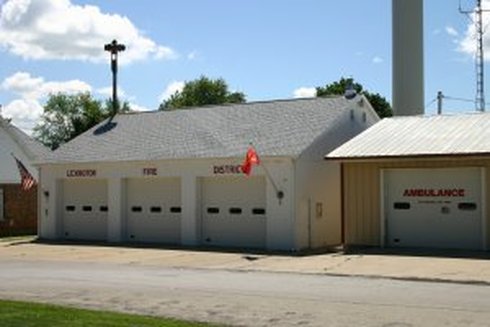
Station 2
Our previous station was located across from the city park, under the water tower. The building was built in the early 1950s and measured approximately 50' x 40'. Originally the building only included area for apparatus and a small storage area. Several years later an addition was made to the building adding 20 feet across the back which gave a meeting room and additional storage/apparatus parking. By the late 90s it had become very evident that a new station was needed. In 1999 a new engine was purchased which barely fit into the station, front to back. And a special extension pipe for the top mounted deluge gun had to be removed from the truck before backing in the building. At one time, we packed 5 pieces of apparatus in the 3 door building.
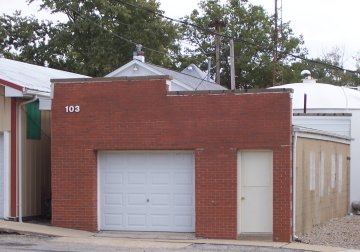
Station 1
The first firehouse dating back to the creation of the Fire Protection District in the mid 40s is located at the base of the Lexington water tower near city park.
